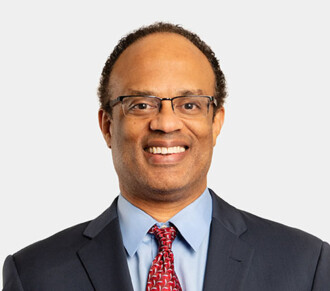ENGAGING PATIENTS WITH THEIR AMD CARE
Visualisation of a condition with no obvious manifestation in the early stages is perhaps the greatest challenge amongst an elderly population. Patients may be keenly aware of the symptoms of cancer, rheumatoid and osteoarthritis, gout, diabetes, cardio-vascular, pulmonary disease and even cataracts. But how do you engage a patient in lifelong monitoring and treatment for age-related macular degeneration (AMD) when they are not yet experiencing any symptoms or vision loss?

Dr Jeremiah Brown, Retinal Consultant from Texas, and American Academy of Ophthalmology Achievement Award recipient, is urging the global profession to educate their patients in preparation for new treatments for geographic atrophy, drawing on a year of experience with the new drugs.
Using OCT and multimodal imaging to identify early signs of GA and to map and track disease development, he is a strong advocate of using these images to educate patients, many of whom still feel that there is nothing that can be done to help them –
“Keep patients engaged. Educate them from day one – start the conversation. It is up to us and our colleagues. There is no miracle drug to reverse macular degeneration, but the importance of imaging cannot be underestimated. Patients will still lose vision with treatment, but just more slowly. When the patients see the images, it becomes real to them – we need to show them what is going on. Autofluorescence is the gold standard in identifying geographic atrophy, highlighting the hyperautofluorescent border of GA lesions,” he adds.

Dr Christiana Dinah, Consultant Ophthalmologist at London’s Middlesex Hospital, and Director of R&D at NW Healthcare NHS Foundation Trust, has several years of experience working with patients enrolled in GA drug trials –
“It is a very exciting space to be in, with 15 or so treatments currently in early-stage trials, and others perhaps closer to approval, but it is essential to get engagement.
We need patients to understand the atrophy of the cells, and this is particularly helped with autofluorescence imaging. Visualisation is essential. It is important to show patients easy to understand images – black areas mean the RPE cells have atrophied and grey areas are the areas at risk. Understanding how the anatomy is changing really helps patients to appreciate which part of the eye is affected.
Many of the therapies in the pipeline for geographic atrophy require significant commitment from patients and imagery is a strong part of that journey, with constant reinforcing messages. Some patients will say - ‘I am two to three years into my treatment and I am not seeing any changes – why am I still coming here?’”
To support this continuous messaging the hospital has created a video explaining the importance of regular treatment and how injections work.
This is encouraging news in view of the recent report in NATURE1 calling for better communication between eye care professionals and patients to deliver earlier diagnosis and treatment.
“Inconsistency of information about macular disease leads to late diagnosis because patients are unaware of related symptoms. Even after diagnosis poor communication can lead to reduced levels of compliance with care,” warns the UK’s Macular Society2.
This communication gap identified a difference in what ECPs think they say to patients and what patients remember, at what is likely to be a distressing time.

Christopher Mody, Clinical Director for Heidelberg Engineering, emphases the need to focus on empowering the patient through information -
“Make patients aware of symptoms and risk factors that are associated with AMD, particularly new visual changes, distortion of vision, struggling to see in low light conditions, washed out colours and family history of sight loss.
“Encourage patients to be mindful of their holistic health – watching their diet, reducing intake of alcohol and cessation of smoking. Patients should never be frightened to seek professional advice. In future, patient empowerment may even extend beyond information to self-monitoring devices that will be used at home.”


